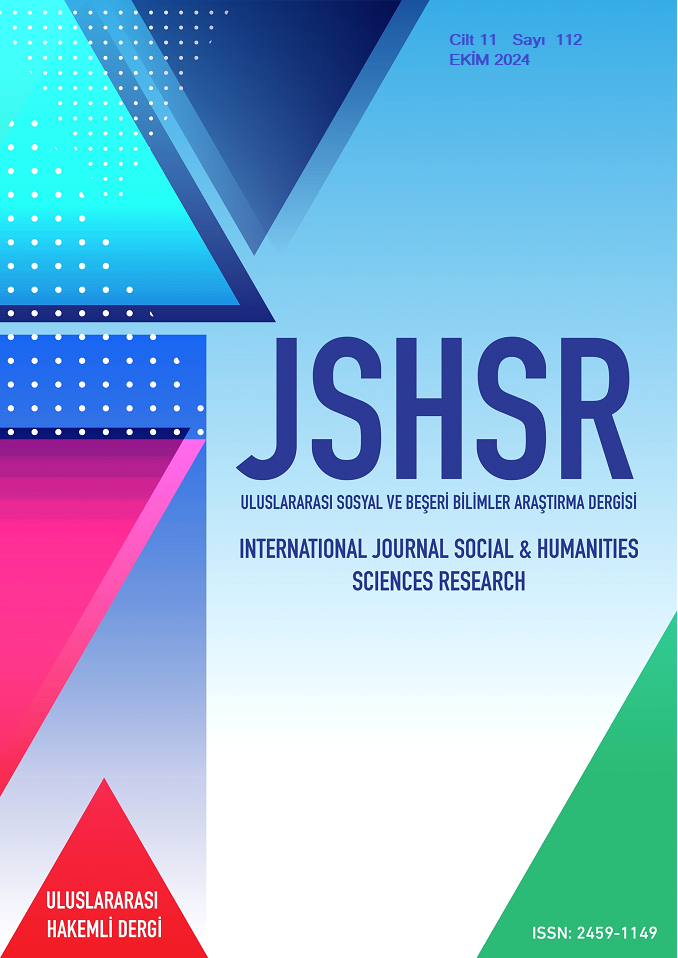Improvisation in Classical Music and the Reasons of It’s Abandonment Today
DOI:
https://doi.org/10.5281/zenodo.14028455Keywords:
Improvisation, Cadence, Classical Music, Comğosr, PerformerAbstract
In the art of music, improvisation is the instantaneous creation of all or part of a piece of music during a performance, either in accordance with the harmonic developments and melodic motifs of the piece or completely independently by the performer. Improvisation exists in almost every local music culture in the world, in popular music, jazz music and Classical Western music. However, the tradition of improvisation in Classical Western music was abandoned in the Romantic period and afterwards. In this article, the origins, development process and the reasons for the abandonment of improvisation in Classical Western music will be revealed. Literature review method was used in the research.
The study concludes that improvisation practice was accepted as an important component of music in the Baroque and Classical periods, while the increase in musical complexity and the writing of works more clearly in the Romantic period reduced the importance of improvisation. It was understood that virtuosity-based works put improvisation skills in the background and increased the predictability of musical performances, and this situation caused improvisation to lose its former importance. This situation has also resulted in the exclusion of improvisation-related courses from the curricula of music education schools. It can be said that the professionalisation of musicianship has led to a decrease in improvisation skills, and technical perfection has come to the fore as a result of the separation of the arts of composition and performance. With the pressure of concert halls and the recording industry, musicians
References
Akdeniz, A. Ö., & Akdeniz, H. B. (2020). Barok Dönemi Bestecilerinden Arcangelo Corelli’nin Op. 5 No 12 “La Folia” Adlı Eserinin Keman Partisinin İncelenmesi. International Journal Of Social And Humanities Sciences Research (Jshsr), 7(61), 3165-3179.
Atlas, A. W. (1998). Renaissance Music: Music in Western Europe, 1400-1600. W.W. Norton.
Badura-Skoda, E., Drabkin W., V. & Jones, A. (Eds.) (2015). "Cadenza". The New Grove Dictionary of Music and Musicians. Macmillan Publishers.
Bailey, D. (2020). Improvisation: Its Nature and Practice in Music. Faber & Faber.
Berkowitz, A. (2021). Improvisation in Western Classical Music: Past and Present. Oxford University Press,
Berliner, P. (2018). Thinking in Jazz: The Infinite Art of Improvisation. University of Chicago Press.
Brown, J. (2012). The Art of Ornamentation: Exploring Baroque Performance Practices. Cambridge University Press.
Cyr, M. (1992). Performing Baroque Music. Amadeus Press.
Davies, T. (2019). The Theory and Practice of Cadenzas: A Study of the 18th Century. Oxford University Press.
Dempster, D. (2000). Improvisation in Baroque Music: A Guide for Performers. Cambridge University Press.
Feld, S. (2017). Sound and Sentiment: Birds, Weeping, Poetics, and Song in Kaluli Expression. University of Pennsylvania Press.
Fuller, D. (2019). Baroque Music and Improvisation. Cambridge University Press.
Graham, M. (2001). The Art of Ornamentation in Baroque Music. Routledge.
Green, L. (2019). Liszt's Legacy: The Impact of His Transcriptions on Romantic Music. London: Routledge.
Grout, D. J. (2014). A History of Western Music. W.W. Norton.
Hansen, T. (2015). The Evolution of the Cadence in Classical Music. London: Musicology Publications.
Hansen, T. (2020). Beethoven and the Evolution of the Cadence. Boston: Berklee Press.
Harrison, M. (2008). The Art of Cadence: An Exploration of Baroque Musical Practices. Routledge.
Higgins, M. (2018). Singing in the 18th Century: The Development of Vocal Techniques and Styles. Cambridge University Press.
Horsley I., Nettl B., Wegman R.C. vd. (Eds.) (2015) "Improvisation". The New Grove Dictionary of Music and Musicians. Macmillan Publishers.
Kinderman, W. (2009). Beethoven. Oxford University Press.
Johnson, R. (2010). Bach and the Baroque: An Overview of His Music. Cambridge University Press.
Jones, R. (2017). The Decline of Improvisation in Classical Music. Routledge.
Jones, L. (2019). Carl Philipp Emmanuel Bach: A Comprehensive Guide. Boston: Berklee Press.
Lapressa (t.y.). Görsel 1. https://www.lapressa.it/articoli/che_cultura/i-linguaggi-della-musica-attraverso-la-storia- continua-a-fiorano
Meyer, A. (2018). The Influence of Nannerl Mozart: Sister, Pianist, and Composer. Los Angeles: Southern California University Press.
Morris, K. (2021). Aesthetic Shifts in 18th Century Music: Cadences and their Implications. Cambridge: Cambridge University Press.
Nettl, B. (2019). The Study of Ethnomusicology: Thirty-Three Discussions. University of Illinois Press.
Openart (t.y.). Görsel 2. https://openart.ai/community/kWNzZy3PnbrxYhbUbY2i
Parker, H. (2012). Renaissance Music: A History of European Music from the 14th to the 17th Century. University of California Press.
Ries. F. (1830). Memoirs of Beethoven. Leipzig: Schott Music.
Rosen, C. (2013). The Classical Style: Haydn, Mozart, Beethoven. W. W. Norton & Company.
Schweitzer, K. (2018). J.S. Bach: His Life and Work. Dover Publications.
Sullivan, J. (2020). Cadenzas and Their Role in Classical Music: A Historical Overview. Yale University Press.
Smith, R. (2021). Notation systems and the suppression of improvisation in Western classical music. Historical Musicology Review, 31(4)
Smith, A. (2015). Monteverdi and the Origins of Opera. Yale University Press.
Taruskin, R. (2010). Music in the Seventeenth and Eighteenth Centuries. Oxford University Press.
Thompson, J. (2019). The Life and Music of Sergei Rachmaninoff. Rowman & Littlefield.
Tovey, D. F. (2012). Essays in Musical Analysis. Oxford University Press.
Tucker, M. (2021). The Role of Cadences in 19th Century Opera. Boston: Berklee Press.
Wegman, R. (1998). The Crisis of Music in Early Modern Europe, 1470-1600. Oxford University Press.
Williams, M. (2020). Beethoven and the Control of Musical Expression. Harvard University Press.
Downloads
Published
How to Cite
Issue
Section
License
Copyright (c) 2024 INTERNATIONAL JOURNAL OF SOCIAL HUMANITIES SCIENCES RESEARCH

This work is licensed under a Creative Commons Attribution 4.0 International License.


